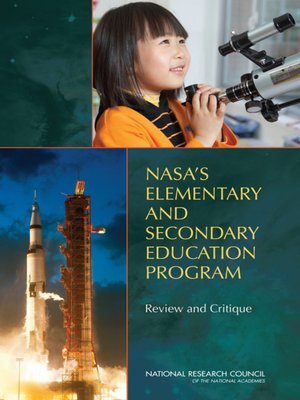NASA's Elementary and Secondary Education Program
ebook ∣ Review and Critique
By National Research Council

Sign up to save your library
With an OverDrive account, you can save your favorite libraries for at-a-glance information about availability. Find out more about OverDrive accounts.
Find this title in Libby, the library reading app by OverDrive.



Search for a digital library with this title
Title found at these libraries:
| Loading... |
<p>The federal role in precollege science, technology, engineering, and mathematics (STEM) education is receiving increasing attention in light of the need to support public understanding of science and to develop a strong scientific and technical workforce in a competitive global economy. Federal science agencies, such as the National Aeronautics and Space Administration (NASA), are being looked to as a resource for enhancing precollege STEM education and bringing more young people to scientific and technical careers.</p>
<div>For NASA and other federal science agencies, concerns about workforce and public understanding of science also have an immediate local dimension. The agency faces an aerospace workforce skewed toward those close to retirement and job recruitment competition for those with science and engineering degrees. In addition, public support for the agency's missions stems in part from public understanding of the importance of the agency's contributions in science, engineering, and space exploration.</div>
<div>In the NASA authorization act of 2005 (P.L. 109-555 Subtitle B-Education, Sec. 614) Congress directed the agency to support a review and evaluation of its precollege education program to be carried out by the National Research Council (NRC). NASA's Elementary and Secondary Education Program: Review and Critique includes recommendations to improve the effectiveness of the program and addresses these four tasks:</div>
<div>1. an evaluation of the effectiveness of the overall program in meeting its defined goals and objectives;</div>
<div>2. an assessment of the quality and educational effectiveness of the major components of the program, including an evaluation of the adequacy of assessment metrics and data collection requirements available for determining the effectiveness of individual projects;</div>
<div>3. an evaluation of the funding priorities in the program, including a review of the funding level and trend for each major component of the program and an assessment of whether the resources made available are consistent with meeting identified goals and priorities; and</div>
<div>4. a determination of the extent and effectiveness of coordination and collaboration between NASA and other federal agencies that sponsor science, technology, and mathematics education activities.</div>






